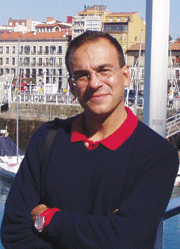E-Archive
Shot Peening in the Automotive Industry
in Vol. 15 - November Issue - Year 2014
Gearboxes, Efficiency, Noise and Shot Peening

Mario Guagliano
Gearboxes are among the most important automotive elements. They allow transmission of power from the engine to wheels with the most appropriate parameters as a function of in-service conditions. The gearbox is probably the component that determines the character of a car, and strongly influences our driving style.
Gears, shafts and bearings are among the fundamental parts of a gearbox and are the beginning of the automotive, object of experimental investigations, analytical and numerical research and of a never-ending development of new design procedures and approaches.
The result of such an effort is a vertiginous reduction of the gearbox dimension, as well as a great increment of its performances. In particular, gears have been one of the main objects of interest: thermal treatments, analytical studies about meshing, experimental investigations on contact fatigue localized near the midpoint of the flank, and bending fatigue at the tooth root have all been the object of thousands of scientific and technical papers. In addition, shot peening has been successfully applied to gears, and it is now a necessary treatment for high performance gearboxes.
Nowadays, in the present industrial contest characterized by a global market, automotive manufacturers are being asked for a special effort to remain competitive: they must design and construct energy saving and comfortable cars. That is to say, that among the main challenges in the automotive market, efficiency and noise reduction figure as well.
If we focus the attention on gears, this means that engineers must find new solutions to reduce mechanical losses and the noise generated by gears and the other rotating parts.
How can this goal be achieved? Well, many factors contribute to reduce fuel consumption and noise. Firstly, the new computational design approaches, based on the use of simulations and finite element codes, allow for a more accurate design of the gears, and of their working conditions. For instance, by using Computational Fluid Dynamics (CFD) software, it is possible to calculate the flow of the lubricant in the gearbox, thus allowing the design of efficient systems aimed at reducing the mechanical losses related to lubrication.
Another important factor is the possibility to use ever-more-resistant materials, thus allowing the reduction of the size of the gearboxes, making them lighter and finally, reducing the weight of the car and its consumption.
How about shot peening? What has shot peening got to do with it? We know, shot peening has always been used to increase the mechanical strength of gears, both in terms of contact fatigue (pitting, micropitting,..) and bending fatigue. And for sure, by increasing the fatigue strength of gears, it contributes also to making the car lighter.
But, as far as I know, no deep studies have been done so far to investigate the role that shot peening could have on efficiency and noise reduction. Indeed, these aspects are related more to the surface state, roughness and topography than to the residual stress field and to surface hardening. That is to say, from this point of view, the usual shot peening parameters could be not the best ones.
In other words, it is clear that the topography of the contact surfaces has a great role in the lubrication conditions; this means that by setting appropriate shot peening parameters, it could be possible to improve the lubrication condition and the energy efficiency with it.
The same consideration can be done for noise: it would be interesting to investigate how the different surface states due to different shot peening treatments influence the final noise generated by the gearbox. Similar studies have been done for other technological processes, and a numerical model able to explain the experimental results has been defined and is now a useful design tool. Shot peening could follow the same path.
At the 13th International Conference on Shot Peening recently held in Goslar, a nice town sited in Germany, only one paper partially discussed this subject with just preliminary even if promising results. It would be interesting to keep on investigating this area by addressing appropriate projects.
Shot Peening in the Automotive Industry
by Mario Guagliano
Contributing Editor MFN and
Associate Professor of Technical University of Milan
20156 Milan, Italy
E-mail: mario@mfn.li
Author: Mario Guagliano



























